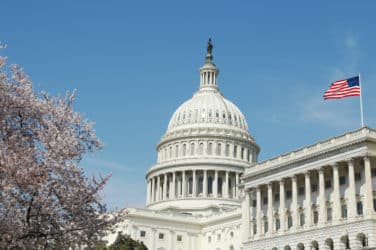So, what are trading desks around Wall Street spending their money on?
According to a recent report from Greenwich Associates, institutions are allocating their increasingly scarce resources to fixed income pursuits and technology. Furthermore, these managers are approaching overall major changes with trepidation and are cautiously watching how the macro economic picture shakes out under President Trump.
Why fixed income? Why not equities or options or foreign exchange?
The ramp up in fixed income spending is directly linked to the expectation interest rates will shift in the coming months and years. After years of low and steady interest rate policy, the Federal reserve has made it very clear that the day of ultra-low interest rates has come to an end – as current forecasts point to a hike in short term rates this month – the first increase since 2015. And future rate hikes are also likely, with many pundits calling for two more interest rate hikes in the next 12 months totaling at minimum, 75 bps.

Kevin Kozlowski
Improvements in the economy and the possibility of fiscal stimulus have increased the chances that the Federal Reserve will raise interest rates this month, said Fed Governor Jerome Powell in a speech just last week. Futures markets are putting as much as a 90% likelihood that rates will be raised by at least 25 bps at the next meeting which begins on March 14. Some traders told Markets Media that the Fed could surprise the market could bump rates even higher – 50 bps – given recent comments on fiscal policy and wage push inflation pressures.
Rising interest rates make fixed income products cheaper and thus more attractive to investors. Also, a rising rate scenario negates prepayments and makes fixed income securities, such as MBS and ABS, very attractive to investors who fear getting their principal investment earlier than expected and having to reinvest these monies at lower market rates.
The increase in technology spending is much more intuitive as structural and regulatory changes in the marketplace, such as MiFID II compliance and other regulations, have been prime drivers of technology spending. In order to maintain efficiency, desks need to have the latest and best technology at their collective fingertips to preserve alpha and meet retail investor demands to keep operating costs low and transparent.
In the Greenwich report, “Technology Helps Buy Side Prepare for Uncertainty,” the consultancy added that despite these shifts, institutions did hold off from making any wholesale radical changes on their trading desks in 2016 as they assessed the impact of macro-economic variables including the Trump victory in the United States, the ongoing Brexit process in Europe and long-awaited action by the U.S. Federal Reserve.
The report canvassed 270 institutional traders across the globe from June through November 2016, covering asset classes from equities to fixed income to Forex, gleaning insight on topics form budget allocations, trader staffing levels, OMS/EMS/TCA platform usage, and the impact of market structure changes.
Move to Bonds
Institutions reported an average trading desk budget (for compensation and technology expense only) of $35.8 million, a level essentially flat from 2015. Institutions increased fixed-income trading desks budgets by an average 3% year-over-year, while decreasing budgets for equities and FX desks by 1%. Buy-side trading desk headcount was flat from 2015-2016, and compensation expenses continue to represent the majority of trading desk budgets.
“More than one-third of volume traded globally in fixed-income markets is now executed electronically,” said Kevin Kozlowski, Institutional Analyst at Greenwich Associates and author of the new report. “Couple that with three-quarters of approximately 2,500 respondents in our most recent FX study reporting use of electronic trading for some of their trading volume and it should be no surprise that technology budget allocations are going to be increasing for the foreseeable future.”
Also, Kozlowski noted that in fixed income, while trading desks on average reported a modest 3% increase in budgets year-over-year, last year was “fairly good” for fixed-income markets, and the outlook for 2017 and beyond looks favorable in terms of increasing trading desk budgets.
“While small, the rise reported in 2016 is an important signal. The large number of bond products requires headcount commitments, and with fixed-income technology maturing, trading desks need to earmark allocations specifically for headcount, additional technology, maintenance, and improvements to the desk in order to keep pace with the industry,” he added.
Technology Spend
The report also found that in 2016 institutions shifted budget allocations from compensation to technology. In 2015, compensation expenses made up 70% of trading desk budgets; that share fell to 65% in 2016, with the difference shifting to technology. Institutions continued to devote sizable shares of their budgets to market data terminals, and increased their spending on Execution Management Systems (EMS) and Transaction Cost Analysis (TCA) from year to year.
The financial technology discussion around equity trading desks has been ongoing for well over a decade, Kozloswski noted. While the market for equities trading technology is relatively mature, innovation will continue to be essential for traders focusing on fixed income and FX.
“Over one-third of volume traded globally in fixed-income markets is now traded electronically. Couple that with two-thirds of the nearly 2,400 respondents in our latest FX study reporting some of their trading volume being done electronically, and technology budget allocations are poised for growth in the foreseeable future,” he said.
In technology, buysiders said that market data terminals continue to require the largest share of technology budget dollars. The command they currently hold on budgets is beginning to loosen, however, as institutions review usage and allocate any savings from fewer terminals/licenses to other tools that are needed to both enhance the trading process and fulfill regulatory requirements.
“Order management systems are a clear winner here—our research shows a nearly 20% increase in allocation to OMS,” Kozlowski said. “While that increase is driven primarily by those trading equities, fixed-income and FX traders reported allocating nearly 20% of the tech budget for OMS. As a valuable tool to the trading process, the buy side is making sure these systems can meet needs across asset classes.”






